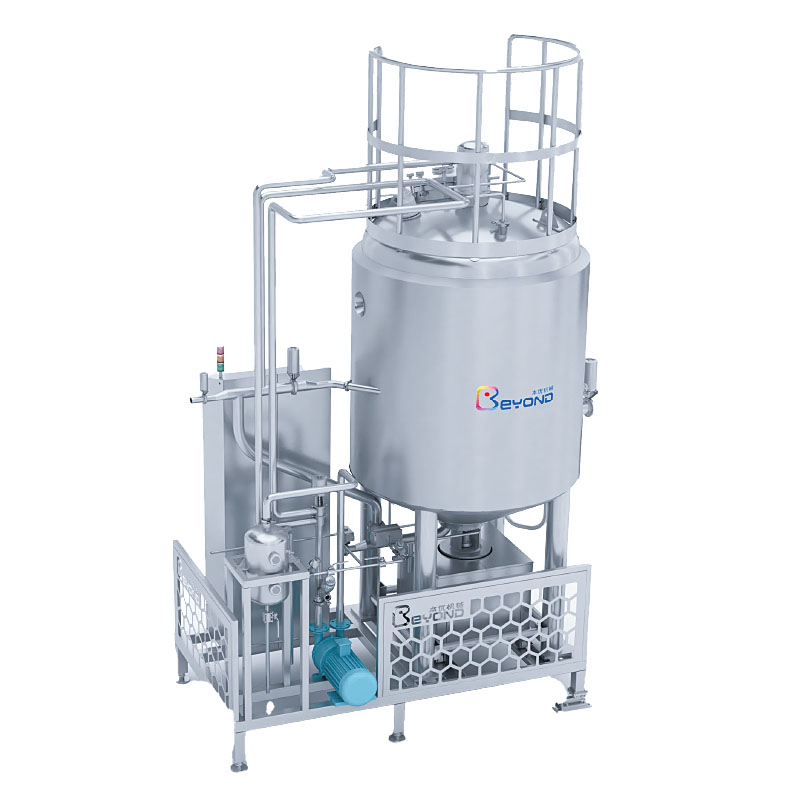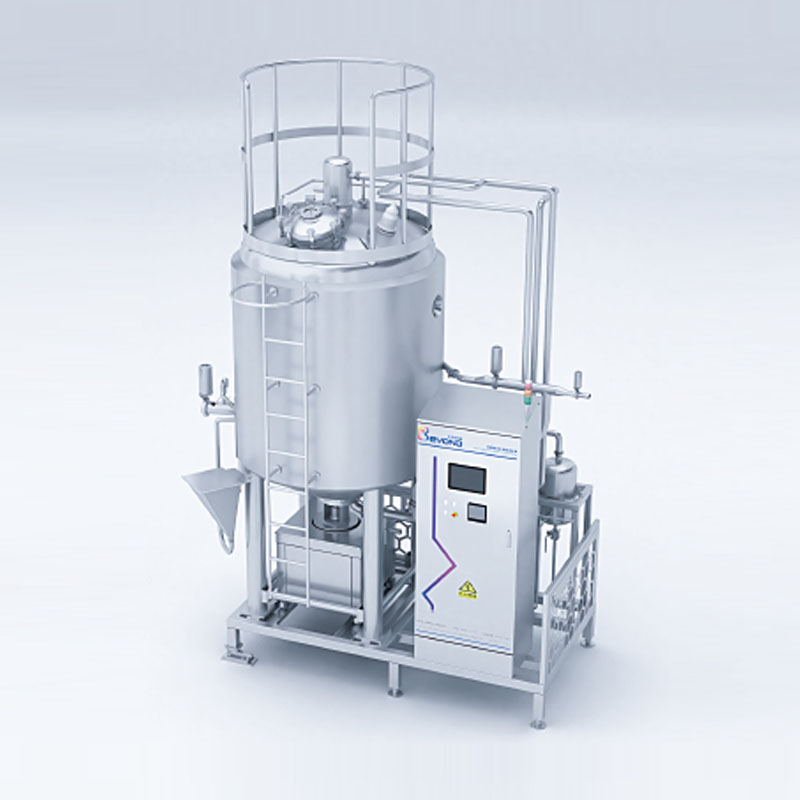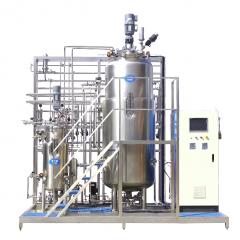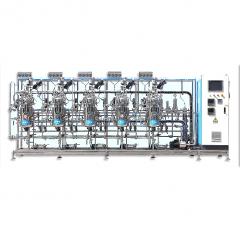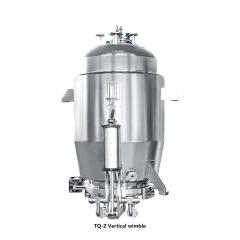
Vacuum shear mixer is a commonly used mixing equipment, widely used in industries such as food, chemical, pharmaceutical, etc. It places the stirring material in a closed stirring container and establishes a negative pressure environment inside the container. By utilizing the high-speed rotation and shear force of the stirring blades, the material is thoroughly mixed, homogenized, and emulsified.
The vacuum shear mixer mainly consists of mixing blades, mixing containers, vacuum system, and electric control system. The stirring blade is a key component for achieving mixing and shear effects, and there are two common forms: single-layer blade and double-layer blade. Mixing containers are usually made of stainless steel material, which has corrosion resistance and good sealing performance. The vacuum system is used to extract the gas from the container, creating a negative pressure environment, thereby preventing material oxidation and improving material stability. The electronic control system is used to control and monitor the mixing process.
The advantages of a vacuum shear mixer include:
1. It can be mixed and emulsified in an anaerobic environment to avoid oxidation reactions and material quality loss.
2. Good mixing effect, able to mix thoroughly and evenly, and make the particles finer, improving product quality.
3. Due to the application of vacuum environment, bubbles can be effectively removed, reducing the volume and density of the product.
4. The equipment has a simple structure, convenient operation, and is easy to clean and maintain.
Vacuum shear mixer is widely used to prepare high-quality food, chemical products and drugs, such as chocolate, facial mask, emulsifier, shampoo, etc. It can meet the requirements of different industries for product quality and production efficiency, and is one of the important mixing equipment.
Equipment Application
The vacuum mixer is one kind of highly efficient vacuum immediate processing unit that is widely used. It adopts high-shear vacuum mixing to reconstitute, dissolve, and disperse powders in liquids.
Applications
Preparation of reconstituted milkPreparation of infant formula
Beverage preparation
Preparation of emulsified food products
Colloid and slurry dispersion and emulsification
Ingredients for ice cream, yogurt, and desserts
Equipment Specifications
Mixing tank volume: 1000L, 2000L, 3000LEquipment capacity: 14000L/H, 28000L/H, 42000L/H
Note: The final capacity depends on the characteristics of the product materials to be dissolved and emulsified.
Equipment Composition and Operating Principle
Equipment Composition
The vacuum mixer consists of mixing tank, emulsifier, vacuum feeder, degassing system, product inlet and outlet system, liquid level protection system, powder valve assembly without dead corners, and weighing and measuring system.Operating Principle
Under the action of the mixer, the liquid and powder materials are dispersed. After being extruded from the circulation port at the bottom of the mixer, they return to the top of the product material layer through the bypass with adjustable flow rate. This cyclic process ensures the sequential dispersion with the first-in-first-out and last-in-last-out order.
The rapid return of the bypass flow forces the product material in the tank to form the vortex. The forced vortex means that the liquid will "rise" along the tank wall, resulting in a significantly larger free liquid surface area compared to the diameter of the tank.
The tank is the vacuum tank, and the powder is conveyed into the tank through the powder valve assembly without dead corners. The powder/air mixture directly enters the liquid below the liquid surface. Due to the vortex and density difference, the separation of air/gas and liquid occurs quickly. The air/gas is located in the center of the tank and is subsequently extracted. The large free liquid surface further provides effective and continuous product degassing. Unlike traditional mixtures, which often trap air during the mixing process, this helps reduce oxidation and improve product quality and consistency.
If the product requires indirect heating/cooling, the forced vortex significantly improves heat exchange efficiency (Large heat exchange surface area and high line speed).
CONFIGURATION TABLE OF VACUUM MIXER
MACHINE DATA
| Volume (L) | 1000/2000/3000 | Material contact parts | S31603 |
| Size mm | 2800*2000*3900 | Sanitation level | Food grade |
| Weight kg | 2500 | Water | Formula water, soft water |
| Electricity | 380V 50HZ 3-phase | Compressed air | 6bar |
| Steam |
|
Temperature display |
|
| Vacuum feeding | Weight control system |
|
|
| Quick access support | Timing system |
|
|
| Recipe management | Formula Water Count |
|
|
| Automatic discharge | Weighing module |
Import brand |
|
| CIP system | Pressure display |
|
|
| Vortex separation technique |
|
Powder imported self-cleaning technology |
|
| Sound and lightalarm function |
|
Appearance design | Beyond industrialdesign 2.0 |
| Temperature display | CIP pump |
First-class domestic brands |
|
| Industrial Steam Treatment Systems | Weighing system |
Import brand |
|
|
Clean steam reserved port |
|
Adjust feet |
|
|
High temperature protection |
|
System version |
Beyond Stretch V1.0 |
|
Sound and light alarm function |
|
Appearance design |
Beyond Industrial Design 2.0 |
In order to better meet customers’ requirements, we continuously conduct research, development, and improvement of our equipment. Some configurations and specifications of the models available on the market may differ from the ones listed in this configuration table. Please refer to the actual machine for specific details.

